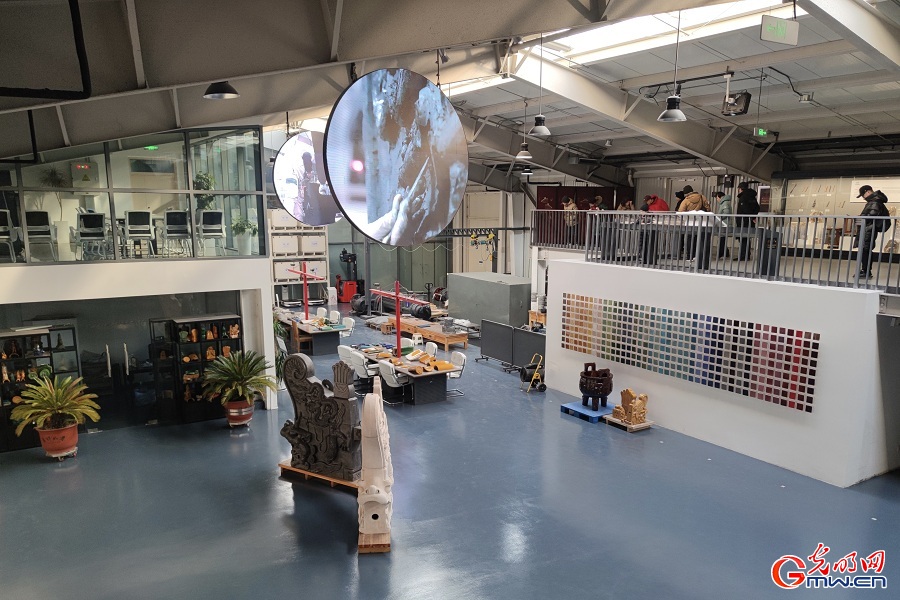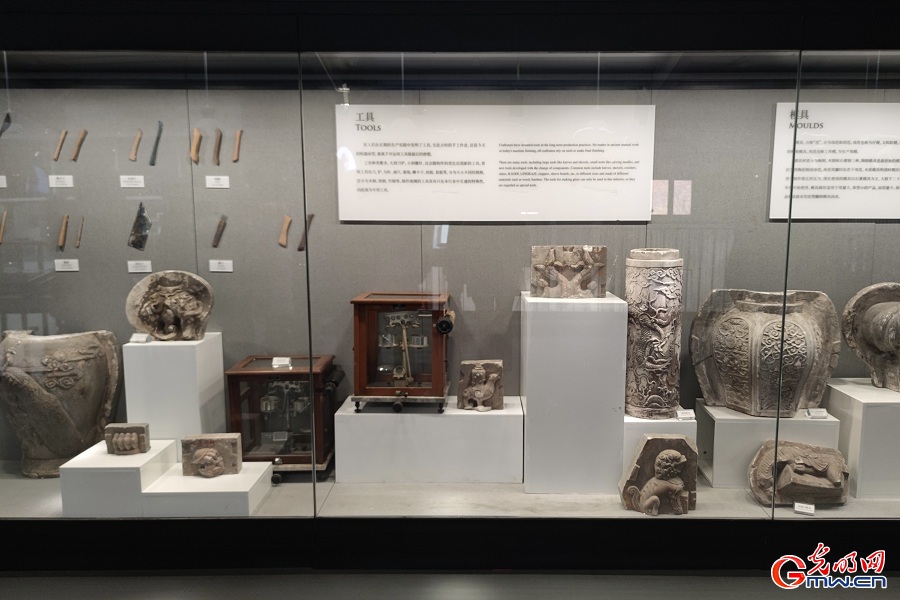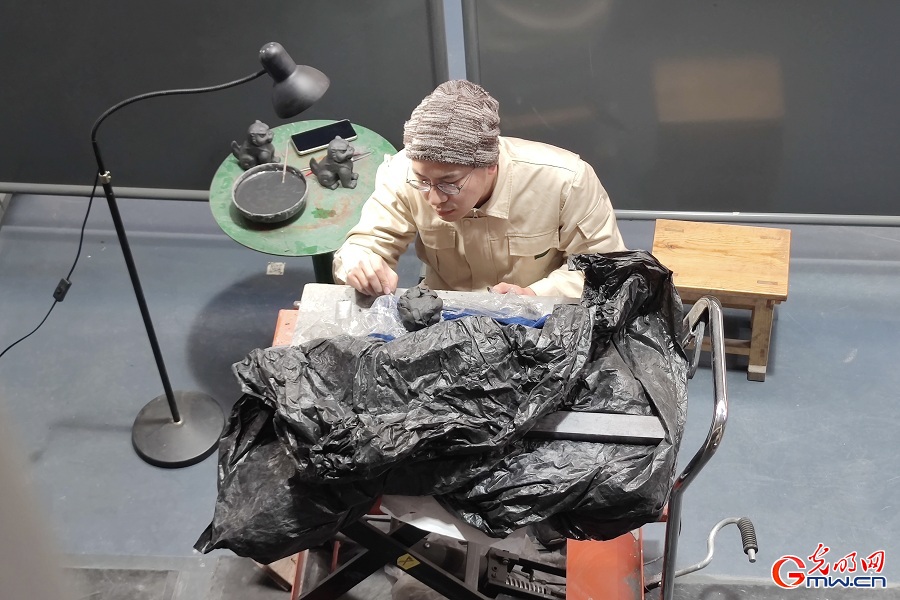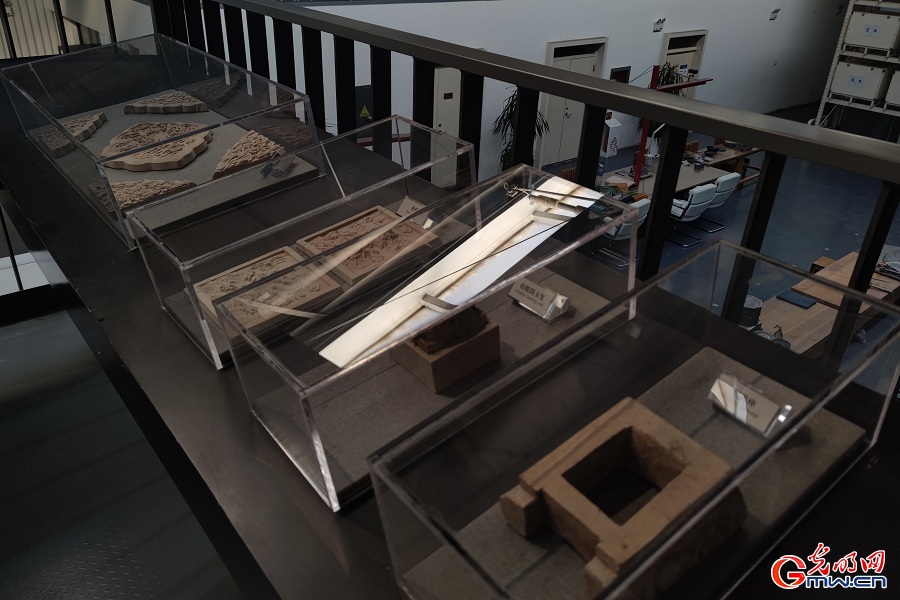


Photo taken on Feb. 2, 2025 shows people visiting the Liuli Production R&D Center at Jinyu Liuli Cultural and Creative Industry Park in Mentougou District, Beijing, China’s capital city. (Wang Xinyuan/Guangming Picture)
For centuries, the intricate art of Liuli (Chinese colored glaze) craftsmanship has been passed down through generations with minimal written documentation. To address this historical gap, the Liuli Production R&D Center at Jinyu Liuli Cultural and Creative Industry Park in Mentougou District, Beijing, China’s capital city, has curated an exhibition titled "The Mirror of Inheritance." This exhibition highlights the transmission of Liuli craftsmanship, offering visitors an immersive experience of this time-honored craft while ensuring its legacy endures.
A deeper exploration into the art of Liuli reveals the critical roles of three specialized groups of artisans: Yaozuo, Wenzuo, and Youzuo.
Yaozuo, the professional kiln workers responsible for fire management, oversee the intricate firing process divided into two steps: plain burning and color burning. Plain burning involves three distinct stages—fumigation (1.5-2 days), heating (3-4 days), and constant burning (1-2 days). Color burning, conducted by a single artisan, requires precise temperature control and extends over 8-10 hours. The expertise of Yaozuo artisans is crucial in maintaining optimal kiln conditions, ensuring the final Liuli pieces achieve their signature brilliance.
Wenzuo, the skilled process stylists and mold makers, play a vital role in shaping Liuli pieces. They adhere to strict historical dimensions and aesthetic standards, ensuring that each creation aligns with the architectural and decorative requirements of different dynasties. Using knowledge accumulated over centuries, Wenzuo artisans meticulously craft molds and blanks, forming the foundation of Liuli pieces that can endure for generations.
Youzuo, the masters of Liuli formulation, are responsible for mixing raw materials and smelting lead to achieve the desired composition and quality. Historically, these artisans operated within small, family-run workshops, closely guarding their formulas as trade secrets. The secrecy surrounding Youzuo craftsmanship persisted even after the founding of the People's Republic of China, making it one of the most mysterious and revered aspects of Liuli production.
The Liuli Production R&D Center at Jinyu Liuli Cultural and Creative Industry Park not only celebrates this exquisite craftsmanship but also pioneers efforts to revitalize and innovate the ancient art form. By combining traditional skills with modern technology, the center ensures that the rich heritage of Liuli continues to inspire and thrive in the contemporary world.

Photo taken on Feb. 2, 2025 shows the crafting tools of Liuli at the Liuli Production R&D Center, Jinyu Liuli Cultural and Creative Industry Park in Mentougou District, Beijing, China’s capital city. (Wang Xinyuan/Guangming Picture)

Photo taken on Feb. 2, 2025 shows a craftsman shaping his work at the Liuli Production R&D Center, Jinyu Liuli Cultural and Creative Industry Park in Mentougou District, Beijing, China’s capital city. (Wang Xinyuan/Guangming Picture)

Photo taken on Feb. 2, 2025 shows the crafting tools of Liuli at the Liuli Production R&D Center, Jinyu Liuli Cultural and Creative Industry Park in Mentougou District, Beijing, China’s capital city. (Wang Xinyuan/Guangming Picture)
点击右上角![]() 微信好友
微信好友
 朋友圈
朋友圈

请使用浏览器分享功能进行分享
